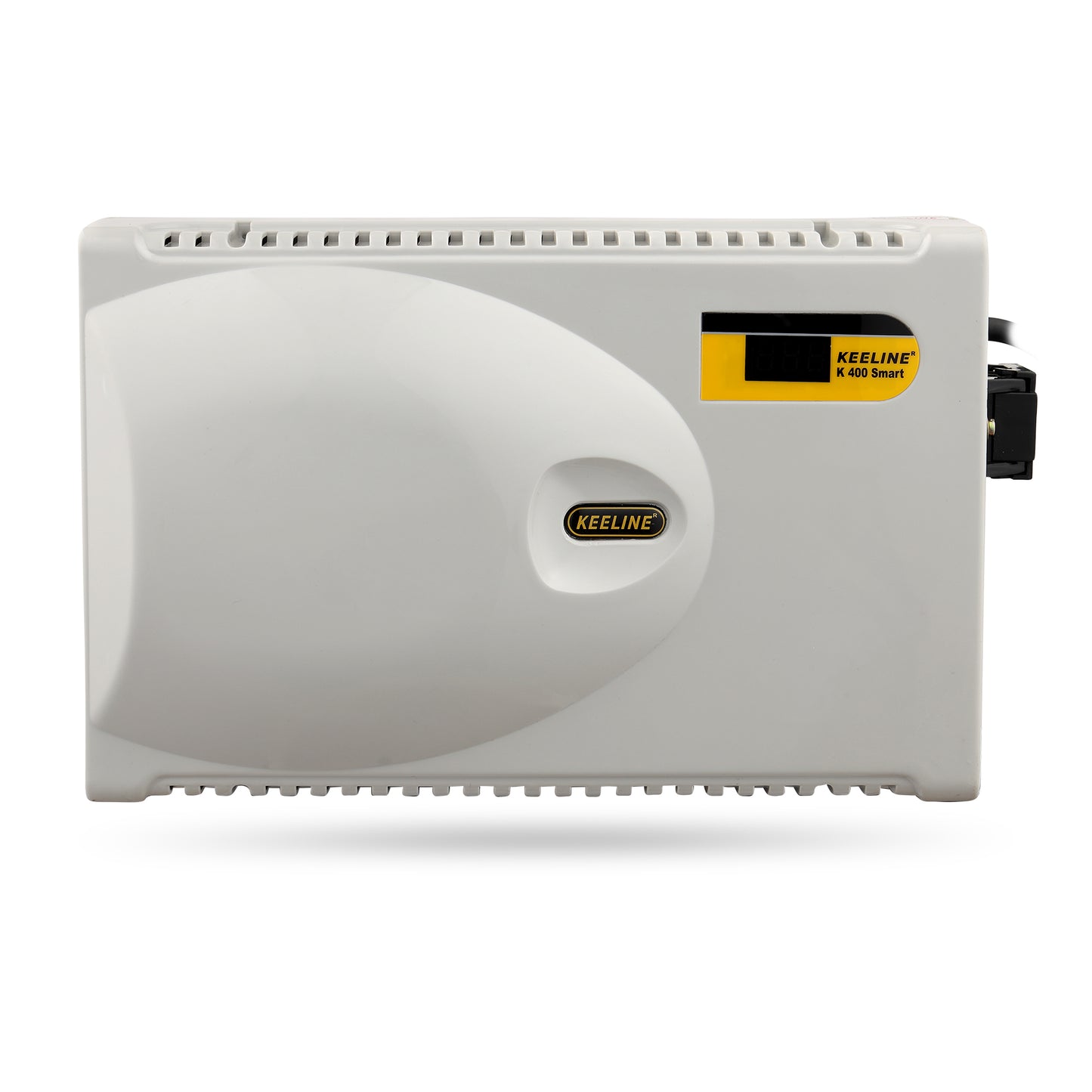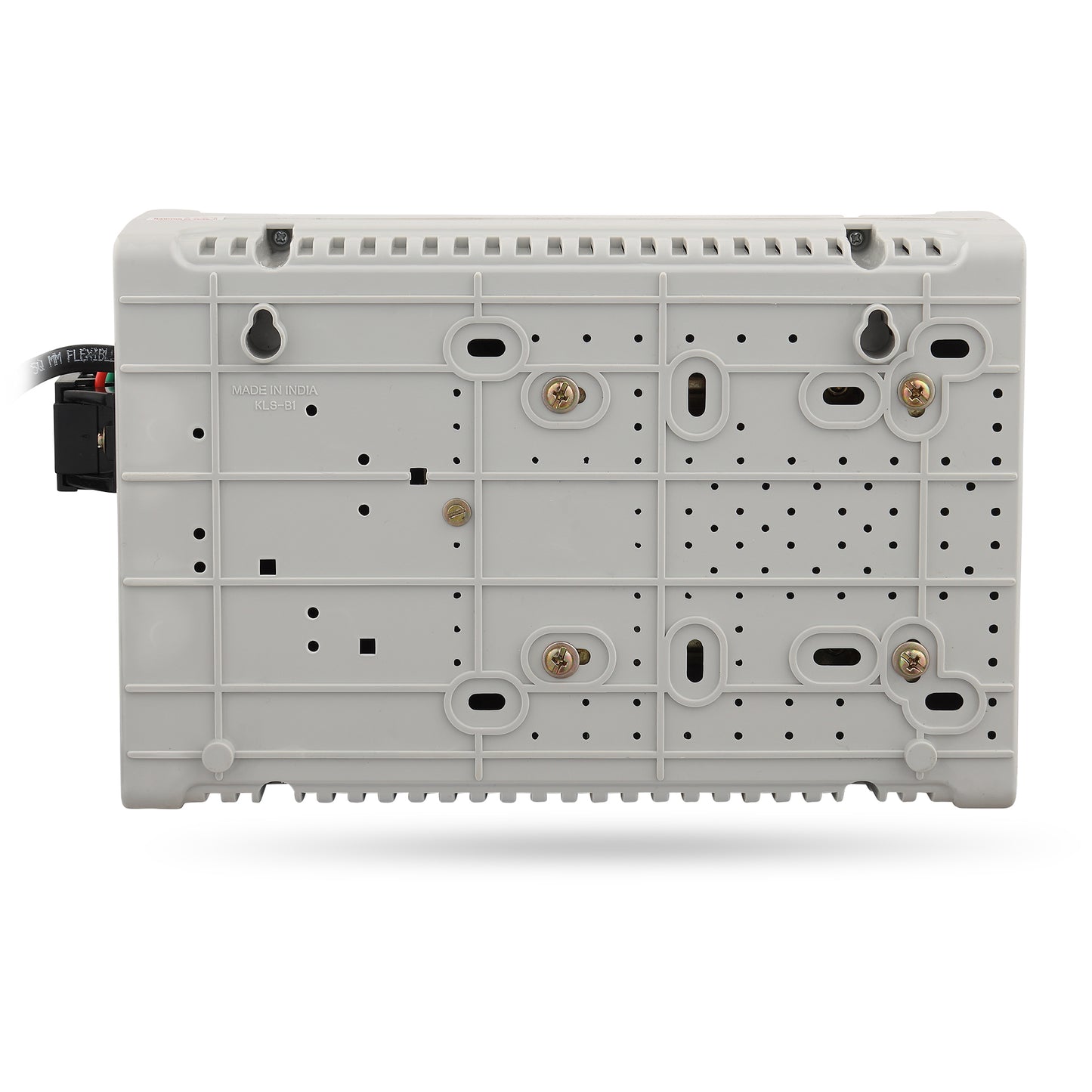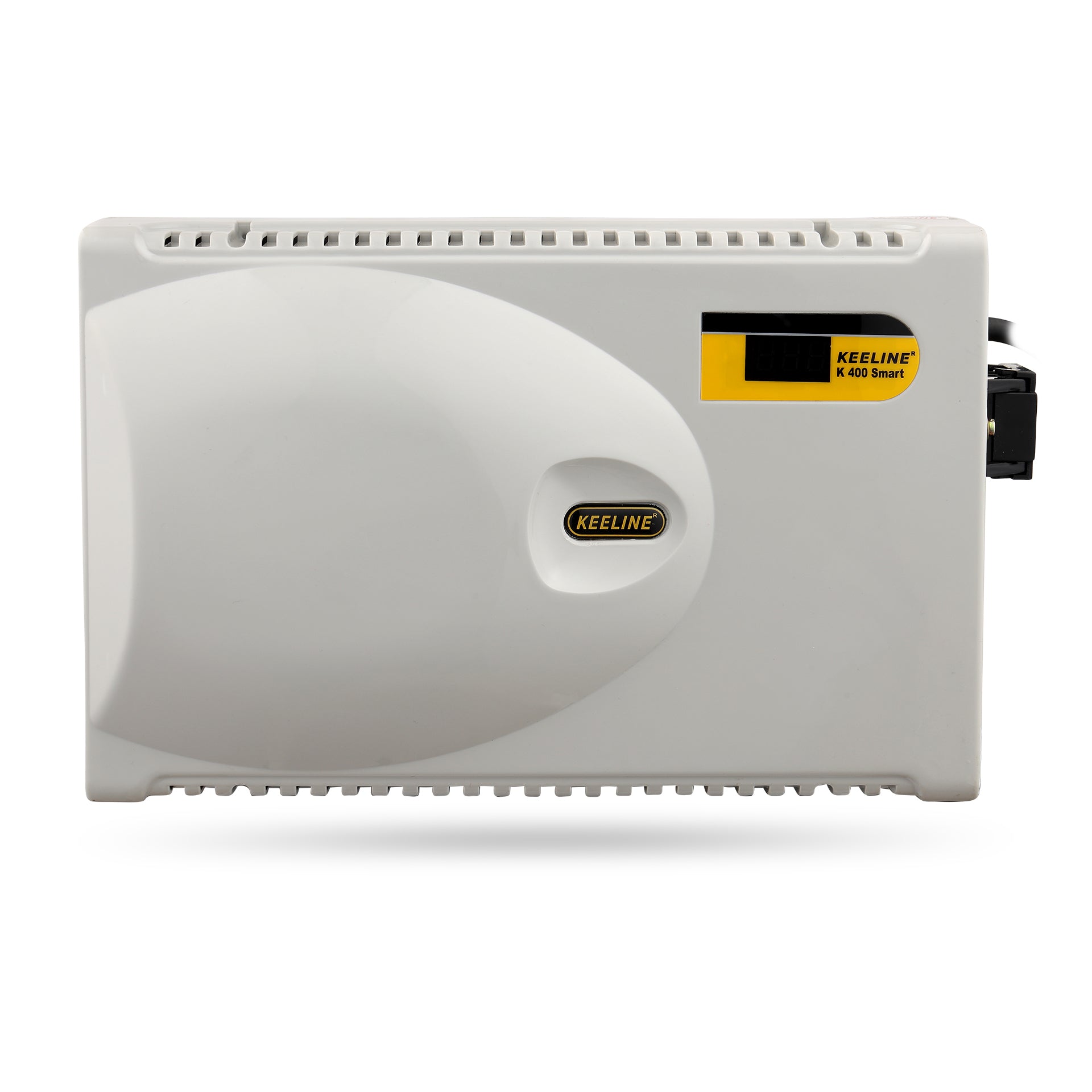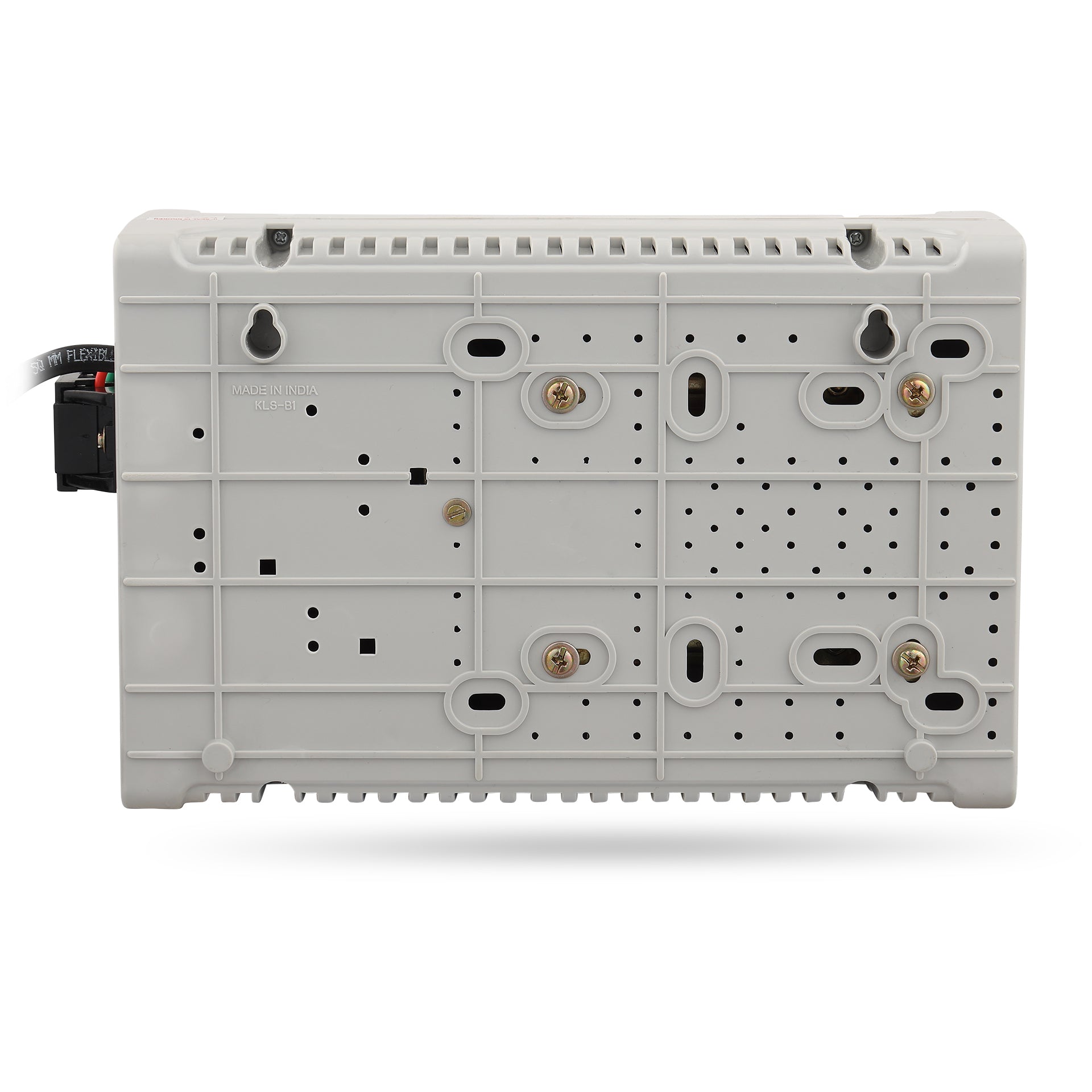K 400 Smart
K 400 Smart
AIR CONDITIONER ≤ 1.5 TON
Couldn't load pickup availability
Share
Capacity (Ampere):
12.0 A
Application:
AIR CONDITIONER ≤ 1.5 TON


Frequently asked Questions
What is an electronic voltage stabiliser?
An electronic voltage stabiliser is a device that automatically maintains a steady voltage level to shield electrical appliances from voltage fluctuations. It makes sure that the output voltage stays within a safe range, protecting equipment from harm and extending their lifespan.
How to select a suitable stabiliser for your device?
Selecting the perfect stabiliser for your appliance can prove to be a major task. Here’s a guide to simplify the process. Consider the following points:
- Power Requirements: Check the voltage and power ratings of your device.
- Voltage Fluctuations: Know the range and frequency of voltage fluctuations in your region.
- Type of Stabiliser: Choose between the type of stabilisers based on the criticality of your device.
- Load Capacity: Make sure the stabiliser can handle the total load of all devices connected to it.
- Additional Features: Look for additional features like time delay, overload protection, and digital displays for better performance and protection.
- Brand and Warranty: Opt for reputable brands and check the warranty and after-sales support.
We assure you that Keeline will provide exactly what you’ve been looking for. Our stabilisers ensure optimal performance and protection for your device.
How does a stabiliser protect its device?
Stabilisers safeguard their devices through guaranteeing a uniform voltage output in spite of variations in the input voltage. This ensures the item operates safely and effectively by preventing damage from over-voltage, under-voltage, or surges.
What is time delay and how much is required?
The term "time delay" refers to the deliberate pause that is added to a control system in order to guarantee stability and avoid fluctuations. Due to this delay, the system may react to changes and disturbances more smoothly and prevent over corrections, which can cause instability.The required time delay varies depending on the specific system and its dynamics. In order to guarantee peak performance and stability while striking a balance between fluctuation risk and responsiveness, it is usually established through study and testing.




